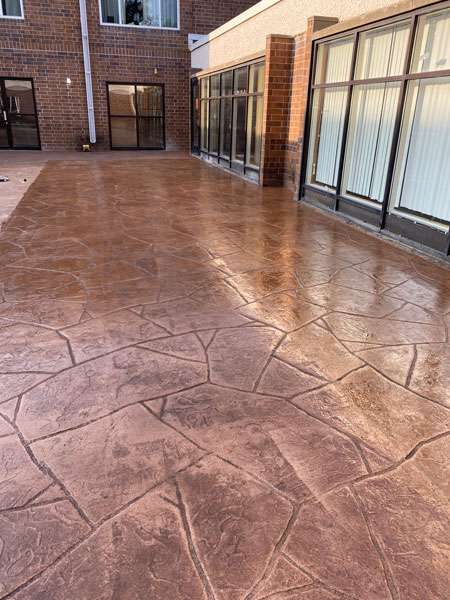Concrete patio stairs are more than just functional elements; they serve as integral components of outdoor spaces, contributing to the overall aesthetics, functionality and value of a property. At Wohlwend Concrete, we understand the importance of well-designed and expertly crafted concrete patio stairs at your Minneapolis home in enhancing both your property’s curb appeal and your outdoor lifestyle.

Enhancing Curb Appeal:
First impressions matter, and the exterior of your home sets the tone for visitors and potential buyers. Well-designed concrete patio stairs can significantly enhance the curb appeal of your property, creating a welcoming entrance that reflects your style and attention to detail. Whether your design preferences lean towards sleek and modern or classic and timeless, Wohlwend Concrete offers customizable solutions to elevate the aesthetic appeal of your outdoor space.
Increasing Property Value:
Investing in high-quality concrete patio stairs is not just about enhancing the visual appeal of your property; it’s also a smart financial decision that can increase its overall value. Professionally installed and meticulously crafted concrete stairs add a touch of sophistication and functionality to outdoor areas, making your property more attractive to potential buyers and commanding a higher resale value. With Wohlwend Concrete’s expertise, you can rest assured that your investment in concrete patio stairs will yield long-term returns.
Expanding Outdoor Living Spaces:
In today’s fast-paced world, outdoor living spaces have become extensions of indoor living areas, serving as retreats for relaxation, entertainment and social gatherings. Concrete patio stairs play a crucial role in connecting different levels of outdoor spaces, facilitating seamless transitions between patios, decks, gardens and other areas. Wohlwend Concrete specializes in designing and constructing custom concrete stairs that maximize usability and flow, allowing you to make the most of your outdoor living environment.
Enhancing Safety and Accessibility:
Safety is imperative when it comes to outdoor stairs, especially in households with children, elderly individuals or individuals with mobility challenges. Wohlwend Concrete prioritizes safety in every aspect of our concrete patio stair projects, suggesting features such as non-slip surfaces, sturdy handrails, and proper lighting to ensure optimal safety and accessibility. With our expertise, you can enjoy peace of mind knowing that your concrete patio stairs are designed and built with safety at the forefront.
Are you ready to get your concrete patio stairs ready to host gatherings in Minneapolis and the Twin Cities area this spring? Call Wohlwend Concrete at 651-426-2610 or contact us to ask any questions you may have about concrete.




